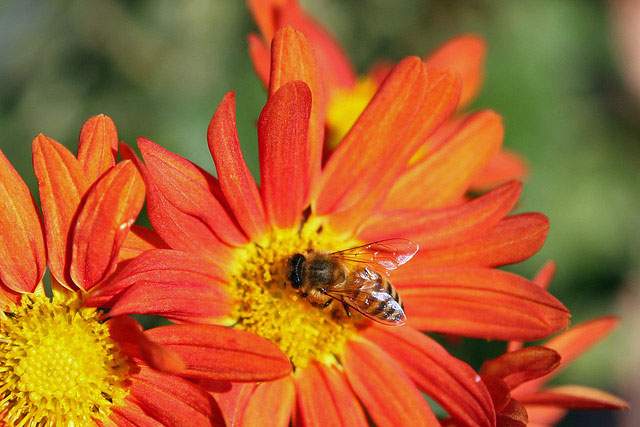
As humans, when looking at a flower, we can only see its green stalk and pretty pink petals. Honeybees have quite a different view of the flowers they feed off of. For the sake of this Moment of Science, pretend that you' are a honeybee.
Look At That Color And Pattern!
As a bee with your ultraviolet vision you can see a pattern of coloring on flowers that signals to you that it's a good choice to go to for nectar. The flower's ultraviolet coloring stands out to you like a bull's eye in a field of flowers. You are attracted to the flower. But its coloring also has another function, and for this you need to be a herbivore.
So poof! You're a caterpillar.
As a caterpillar, the ultraviolet coloring may make you a little dizzy. You see, the same coloring that attracts pollinators repels plant-eating insects. The coloring is especially prevalent around the reproductive parts of the flower, the parts that most need to be protected from the jaws of insects if the flower is to reproduce. Not only does this coloring repel most plant-eating insects, but if a caterpillar does chomp into the flower, the chemicals that make the coloring can be lethal. The chemicals that make the ultraviolet coloring are a kind of insecticide.









